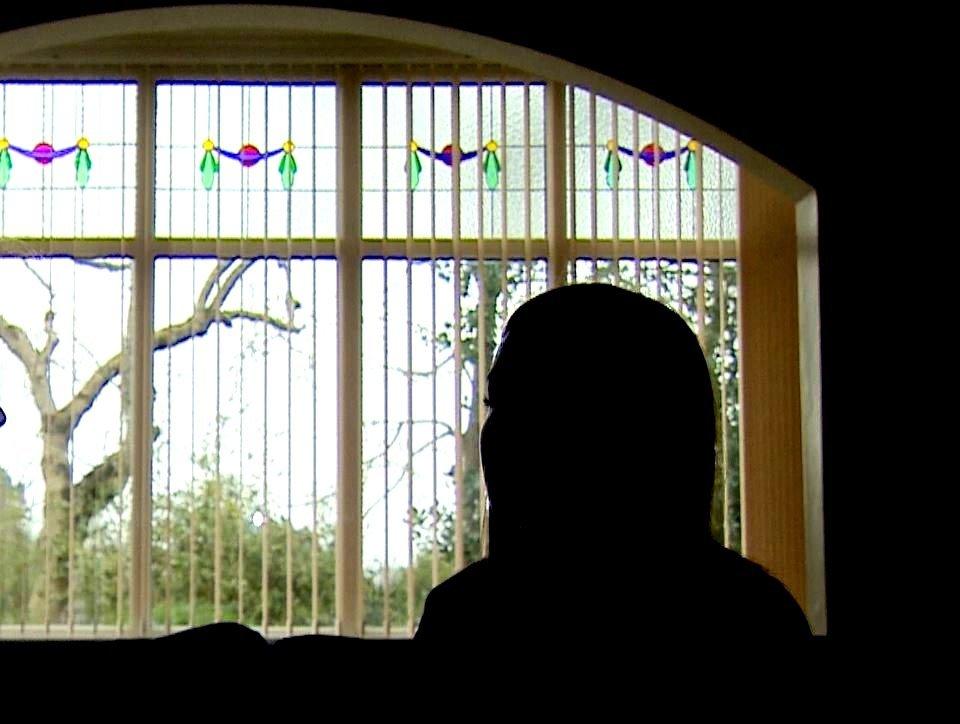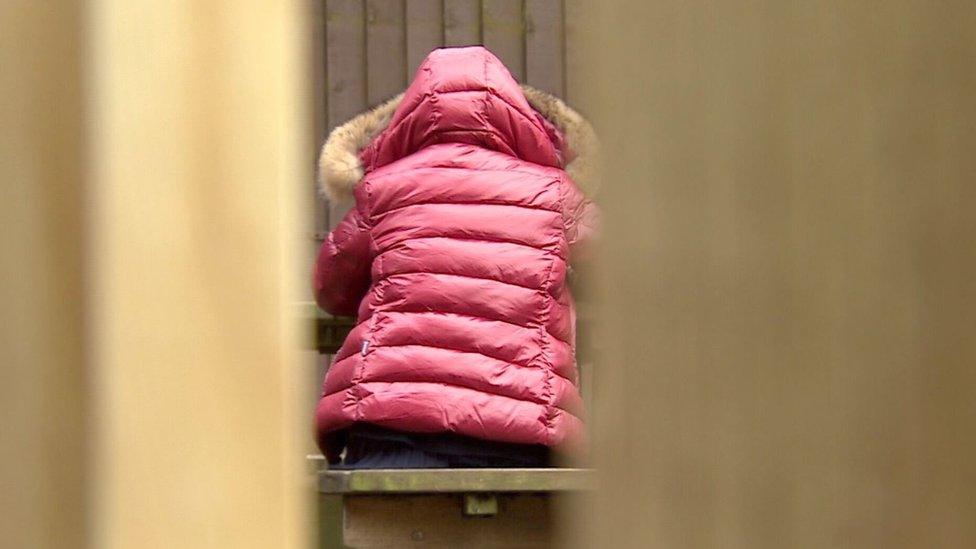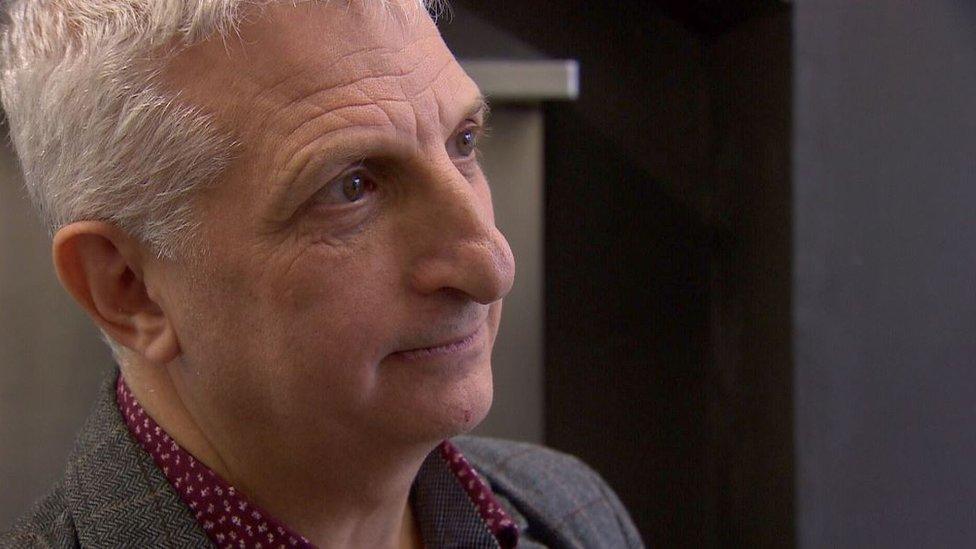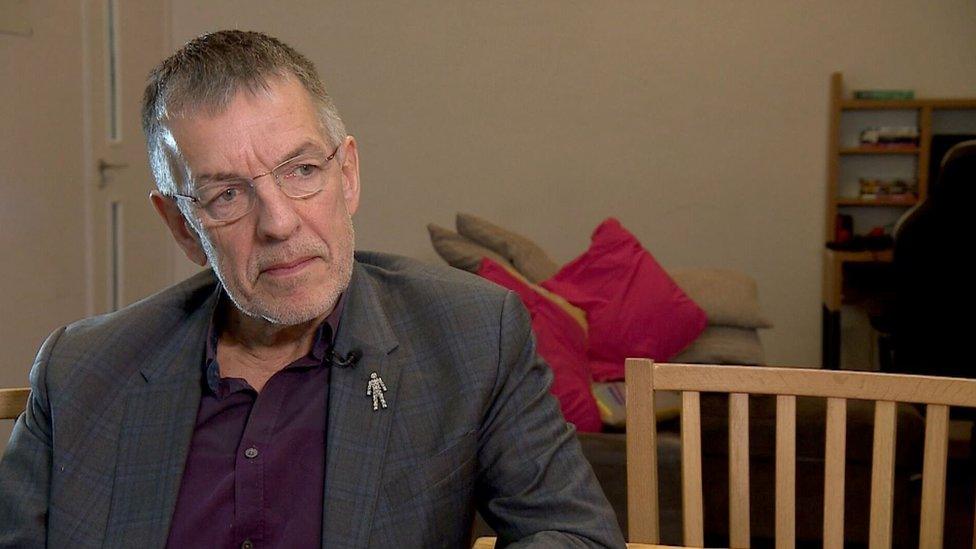Fears for future of children's homes as debts rise
- Published

"Robyn" was in care two hours' drive away from her family
Six out of the 10 largest providers of children's homes and foster carers are running huge debts, suggests a report for councils in England.
The Local Government Association fears such financial instability could put vulnerable children's care at risk.
And some councils report struggling to find suitable places for vulnerable children near their families.
The Independent Children's Homes Association blamed funding cuts for the squeeze on children's homes.
In the 1990s most children's homes were in the public sector but now about 80% are in private or voluntary sector hands which was thought to be better value for money.
But now, escalating costs and difficulties of finding nearby places mean some councils are reopening their own children's homes.

'It was terrifying'

Robyn was eventually moved into foster care in her home city of Liverpool - but it took more than a year
Robyn (whose name we have changed to protect her identity) was 12 when she was taken into care for her own safety.
But the nearest children's home that could offer her a place was nearly two hours' drive away.
One night, a social worker came and took her away from her family to a residential home.
"I didn't even know what the town was called or the street, " she says.
Her story is all too common in a children's care system councils say is struggling with rising demand and increasing costs.
She adds: "I was really close to all my teachers and me school.
"I felt really isolated - having no-one to speak to, no friends.
"I sat in my room for days, watching telly and having no schoolwork to do - it's hard."
She was eventually moved into foster care in her home city of Liverpool - but it took more than a year.

Liverpool City Council says the difficulty of finding places locally is one sign of the major problems facing the care system.
Councillor Barry Kushner, who is the council's cabinet member for children's services, claims some larger providers will fill a place based on how much a council will pay rather than whether it is local to the child.

Liverpool councillor Barry Kushner said the city was reopening some of its own children's homes
"The costs of residential care have in the last three years gone up by about 30%," he says, with Robyn's placement alone about £3,500 a week.
He accepts that some costs are increasing because of the complex needs of children, but also worries about the level of debt some of the larger companies have.
"Where I take issue is where those additional costs are levied on the council because of the internal financing of those organisations, because of who owns them or who is investing in them.
"And councils really shouldn't be picking up the bill for that."
Complex needs
Liverpool, like a number of other authorities, is now reopening some of its own children's homes, closed nearly a decade ago, to be run by the charity, Barnardo's.
The LGA report shows most of the biggest care providers have more debts and liabilities than assets.
Many of the big companies are private equity funded which often means loans have been used to buy the business with the aim of making a profit when it is sold on.
Councils have seen significant increases in the cost of placing a child in a residential or foster placement, partly because of the increasingly complex needs of many children.
But the report also says the six largest independent companies made £215m in profit last year with some making more than 20% profit on their income.
The LGA wants more transparency over costs and for the financial health of the big firms to be monitored to avoid a similar scenario to the collapse of adult care home provider Southern Cross in 2011.
'Excessive profits'
Judith Blake, chair of the LGA's Children and Young People Board, says much of the growth of the biggest providers "has been fuelled by enormous loans, which will at some point need paying back, yet this research shows many of them do not have the assets to do that".
She added: "Stability for children in care is paramount... and an oversight scheme is needed to help catch providers before they fail and ensure company changes don't risk the quality of provision.
"Providers should also not be making excessive profits from providing placements for children.
She wants a promised government review of children's care to consider how to better support in-house provision and smaller providers.

Peter Sandiford is chief executive of the Independent Children's Homes Association
The Independent Children's Homes Association represents both large and small private care companies as well as voluntary sector homes.
It says the report doesn't look at the value for money or quality of care provided by many independent care companies.
Its chief executive, Peter Sandiford, says he would be concerned if the level of debt held by some firms keeps growing, but that the likelihood of one of those companies failing is "at the moment, probably not very high".
He also believes that, rather than care companies making large profits, many of the smaller providers are struggling on the fees that local authorities pay.
With increasing numbers of children needing support he wants independent care providers and councils to work together more closely to plan what is needed.
"What we're looking at is growing the sector, and having more homes to look after very vulnerable children.
"I don't think we can afford to say one thing isn't right, because we need the whole spectrum (of homes)."
A spokeswoman for the Department for Education said an extra £1 billion of new funding was being put in to adult and children's social care, adding: "The safety and suitability of a child's placement in care is our absolute priority, which is why we are reviewing the system so children receive the best possible care."